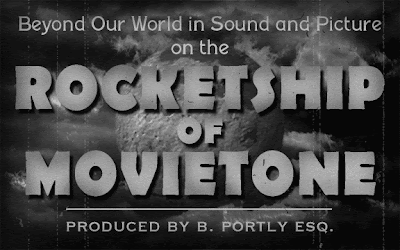Warlord #118 (June 1987)
Written by Michael Fleisher; Art by Ron Randall
Synopsis: The ship taking the blonde stranger to New Atlantis is attacked by a strange scorpion-looking vehicle. The stranger flies from the ship, blocks stinger blasts with her bare hands, and starts punching the craft open, The pilot distracts her by blasting the ship in half.
The stranger flies back the ship. Holding the halves together, she carries it to a nearby island. There the crew can make repairs, but it looks like the stranger will be flying to New Atlantis.
In Shamballah, Morgan is saddling his horse to ride out looking for Tara. The Queen for her part is on her way back, presumably, just stopping to water her horse. That’s when the former Vathek Y’Smalla makes her move:
Using Apokolipsian illusions, she gets the drop on Tara and knocks her out.
Morgan comes across a woman being attack by an weird, orange, insect monster. He dispatches it in his usual way, but the girl--far from thanking him--tells him to stay away, then she faints. Puzzled, Morgan picks her up to carry her to a nearby town.
Morgan brings the girl into an inn. He doesn't get the welcome he expected:
Desaad’s smear campaign has turned the townsfolk against him. He has no choice but to fight them. Luckily, a blind man who was tortured by Desaad (then freed by the Warlord) shows up to vouch for him.
Elsewhere, Redmond is in the hand of tribesmen about to sacrifice him in the flaming maw of their idol. He manages to get free, and lobs a couple of grenades at them. In the chaos the follows, Redmond retrieves his and makes his escape.
In Shamballah, Jennifer is practicing to get her magical mojo back. She’s interrupted by Mariah, who has come to tell her goodbye. Mariah feels guilt about how her actions have made everyone else miserable, and she’s leaving:
The blonde stranger has reached New Atlantis and finds it deserted. Her thoughts reveal her to me the superheroine known as Power Girl. She used to believe she was Superman’s cousin, but now she knows herself to be the granddaughter of Arion, Lord of Atlantis. She doesn’t plan to leave New Atlantis until she finds out more about her parents and grandparents.
A bit later, Morgan rides back into Shamballah. He’s greeted by an angry Machiste who suckerpunches him. Machiste is angry about Morgan’s relationship with Mariah. He declares their friendship over and rides off.
Things to Notice:
- This issue marks the first time a DC Universe superhero has appeared in Skartaris.
- Mariah, Morgan and Jennifer are back in their old costumes (though Mariah still sports her new eye make-up).
Where it Comes From:
This issue marks the beginning of a series of retcons over decades to the origin of Power Girl. When Power Girl first appeared in All Star Comics #58 (1976) she was Kara Zor-L, Kryptonian cousin--essentially the Earth-2 version of Supergirl. Post-Crisis there was no Earth-2, and post John Byrne's Man of Steel Superman reboot, Superman was the last survivor of Krypton.
Power Girl needed a new origin. In Secret Origins vol 2 #11, she got one: She was now the descendant of the Atlantean sorcerer Arion, and she had been in suspended animation for a long time.
This issue marks the beginning of a series of retcons over decades to the origin of Power Girl. When Power Girl first appeared in All Star Comics #58 (1976) she was Kara Zor-L, Kryptonian cousin--essentially the Earth-2 version of Supergirl. Post-Crisis there was no Earth-2, and post John Byrne's Man of Steel Superman reboot, Superman was the last survivor of Krypton.
Power Girl needed a new origin. In Secret Origins vol 2 #11, she got one: She was now the descendant of the Atlantean sorcerer Arion, and she had been in suspended animation for a long time.











crop.jpg)
















